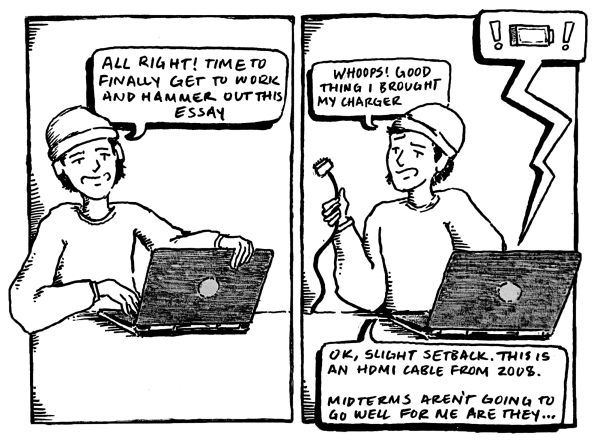We Can’t Take the Allen For Granted
The Allen Memorial Art Museum is home to a large collection of artwork by pre-modern and contemporary artists and serves as a prominent landmark on Oberlin’s campus. Yet Oberlin students are often too busy to interact with the AMAM in a meaningful fashion. Students flit from classes to club meetings, from social events to on-campus jobs. Rising College second-year Shira Presberg expressed this struggle, noting that, “There’s barely enough time for sleep in my schedule, how would I have time to visit the museum?”
Students have a bit of exposure to the AMAM’s collections during Art Rental each semester. As the slow-moving line of students winds through various galleries in the museum, students study the art pieces surrounding them. Started in 1940 by Ellen H. Johnson ’OC 33, Art Rental typically allows students to rent a piece of art for $5 — although during the COVID-19 pandemic, renting art has been free. Johnson started the program with the intention of giving Obies a chance to engage with artwork by living with a piece. However, once the semester picks up, many of us throw ourselves into schoolwork and activities, barely glancing at our dorm room wall. The artwork blends into the aura of our rooms, all but forgotten.
Yet there is so much more to the AMAM than standing in line, waiting to choose your rental piece. True, the AMAM is tiny compared to other museums, but it hardly feels small. Galleries span eras of time, from ancient amulets to modern paintings. The AMAM staff partakes in ongoing research and restoration projects to provide new art for students to study. These pieces are then carefully curated in exhibitions to highlight important themes. One current exhibition draws attention to racism in museum labels.
World-renowned artists — including Pablo Picasso, Henri Matisse, Marc Chagall, Paul Cezanne, and Jaune Quick-to-See Smith — are represented in the AMAM. Exhibits previously shown in popular museums cycle through the AMAM. An upcoming exhibit on Eva Hesse, a German-born American artist, was previously shown in New York and Vienna.
Additionally, the AMAM website has a slew of frequently-updated online resources for students to learn from. There is an e-museum with additional information on any piece on display, and a three-dimensional virtual tour of the entire museum. In-person and virtual events are produced and posted on the website and are often advertised to students in the Campus Digest.
I speak of the AMAM with awe as someone who frequents the Metropolitan Museum of Art in New York City. The Met has more art on display than numerous AMAMs could hold — and even more in viewable storage spaces. But the sheer size of the Met is daunting and makes it impossible to see everything, even if you visit half a dozen times — which is why our college museum is perfect.
I do understand that some students may not believe that they have time for a leisurely trip to the museum. I’ve been there, putting aside outings in order to write a paper. I love using museums as a source of inspiration and reflection, but that’s one of the first things to be pushed aside when school starts. So what if we stopped viewing the museum as purely a leisurely outing? There is educational value in spending time at a museum. We are at Oberlin to learn, so why not learn from great artists and expertly crafted exhibits?
You don’t have to be majoring in studio art or art history to incorporate museum resources into your educational experience. Thus far, two of my professors have based assignments in the AMAM — both of them science professors! Oberlin provides us a liberal arts education, and we should use the museum to supplement these efforts.
If you’re a Comparative American Studies major, try exploring American galleries. For Psychology majors, a collection of Japanese prints by Mary Ainsworth, an attachment theorist, is just upstairs. I’m an Environmental Studies major, and I love studying the paintings that comment on humanity’s relationship with the natural world.
Most of my first-year at Oberlin was spent pushing off visits to the AMAM, until I took a geology class. When my geology professor assigned a museum-based paper on a mineral, I approached the AMAM nervously. Where would I find geological information in an art museum? As soon as I set foot in the building, however, my fears abated. The vast number of artwork that incorporate minerals pleasantly surprised me. My professor opened my eyes to the geological side of art, something I may never have considered. Now I can’t help but notice these geological features in any museum I visit.
It’s a shame that Oberlin’s museum is often overlooked. When rising College second-year Sasha Goldman visited Oberlin as a prospective student, the AMAM made a memorable impression: “I was so moved that Oberlin valued beauty in art and students having access to coexist with a vast collection of art,” she recalls. The AMAM, laying art and history right in front of us, really is an incredible resource for students. It’s important that we never take it for granted.


